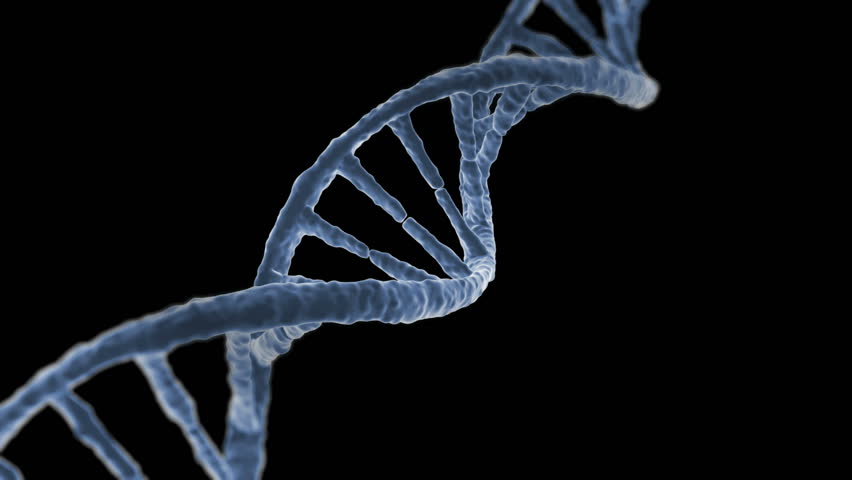In 1866, Gregor Mendel, the father of modern genetics, discovered that traits were inherited and passed on to generations through genes. However, Mendel did not know what the genes were composed of or what allowed the traits to be passed on. In the late 1940s, Francis Crick, one of the two researchers who would soon discover the key component of life, began his work performing X-ray crystallography at the University of Cambridge. X-ray crystallography uses X-ray diffraction to study crystals and their structures. It was his ambition to learn the art of X-ray crystallography in order to study the structure of protein, which are large macromolecules responsible for catalyzing reactions, DNA replication, and transporting molecules throughout the cell, for in it surely lay the secret of life itself.1 During this time, other researchers were trying to find the stable conformation, or structure, of amino acid chains in protein, which was soon discovered by Linus Pauling, who would be Watson and Crick’s rival in finding the DNA structure. This structure was proven to be the alpha helix, the most stable conformation of amino acid chains in protein. Crick then witnessed the errors the researchers had made when determining the structure of the alpha helix. One of the errors he noticed, which he would later apply to his research of the DNA structure, the major component of life that carries genetic information, was the inflexibility of the double bonds on molecular structures.

By the early 1950s, in the Cavendish Laboratory at the University of Cambridge, Crick began his research on the DNA structure with James Watson, who shared the same interest as Crick in genetics and studying the structure of DNA. They discussed and tried to determine the structure of DNA. During this time, Maurice Wilkins and Rosalind Franklin, researchers from Kings College in London, obtained images from the X-ray diffraction they performed on DNA fibers. Franklin’s X-ray photographs had established unequivocally the structure of DNA.2 Wilkins soon shared their findings with Watson and Crick. Watson and Crick began to fear that Linus Pauling, who recently discovered the protein alpha helix, might be ahead in finding the structure of DNA. However, Pauling lacked the luxury of being able to give DNA his undivided attention.3 The major setback for Pauling was having his travel restricted by the United States because he was suspected to be a communist during the Red Scare of McCarthyism. After hearing this, Watson and Crick felt relieved that Pauling would not be the first to discover the DNA structure. They soon began to work with Wilkins in determining the structure of DNA by analyzing the X-ray images Franklin took. However, they found some faults in her findings after analyzing Franklin’s report. Specifically, Watson and Crick found that she stated that the helical structure was not the only possible structure of DNA.

After looking through Franklin’s data, Watson and Crick were able to find that the DNA structure was a double helix with antiparallel strands, which meant that the strands ran in opposite directions. By discovering the DNA strand directions, they just needed to find the appropriate DNA base pairings, which are nucleotides, commonly referred to as bases, that are able to bond with one other nucleotides. In order to do this, they relied on the Chargaff rule, which had been proposed by Erwin Chargaff. The Chargaff rule states that the amount of guanine has to be equal to the amount of cytosine and the amount of adenine has to be equal to the amount of thymine, which allowed them to find that the base parings were adenine-thymine and cytosine-guanine. Once Watson and Crick applied the Chargaff rule to their research, they determined that the base pairs were held together by hydrogen bonds. Watson and Crick made their discovery that the DNA was a double helix, and they constructed their model on February 28, 1953. They finally published their research on April 25, 1953, in the science journal Nature. The Nature paper specified the critical dimensions of their double helix model, such as helical pitch, cylinder diameter, and the number of returns between repeats along the helix.4

In 1962, Crick, Watson, and Wilkins received the Nobel Prize in Physiology or Medicine. After their discovery of the DNA double helix, the understanding of life began to change. Most diseases, like Alzheimer’s and melanoma, occur because of DNA damage. By understanding that the cause of the disease is due to DNA damage, cures can be customized toward repair of the affected area. In addition to DNA repair, cells are able to repair the damage in DNA with different repair systems, like nucleotide excision repair (NER). NER repairs the DNA by removing the damaged section of DNA and replacing it with new DNA.5 Since each person’s DNA is distinct, investigators can pinpoint the culprit behind a crime. They can determine who the culprit is in a crime by comparing the DNA left behind at the scene of the crime and the DNA of the person who is suspected of the crime. By knowing the structure of DNA, Darwin’s theory of evolution can be proven since DNA is passed on from organisms from the same species, which would mean that plant and animal species descended from a common ancestor. Watson and Crick set the precedent by discovering the structure of DNA. Their discovery had revolutionized science and furthered research into DNA.
- Robert C. Olby, Crick, Francis Harry Compton (Detroit: Charles Scribner’s Sons, 2008), 207. ↵
- Sarah Rapoport, “Rosalind Franklin: Unsung Hero of the DNA Revolution,” The History Teacher no. 1 (2002): 116. ↵
- Kersten T. Hall, The Man in the Monkeynut Coat: William Astbury and the Forgotten Road to the Double-Helix (Oxford: OUP Oxford, 2014), 164. ↵
- Ruth Hubbard, “Rosalind Franklin and DNA,” Signs no. 1 (1976): 229-37. ↵
- Bruce Alberts, et al., Essential Cell Biology (New York: Garland Science, 2013), 213-214. ↵



19 comments
Steven Hale
I really enjoyed learning about the discovery of DNA from this perspective. The biology courses I’ve taken always examine the scientific processes that went into learning about DNA, but we rarely hear about the human side of this discovery. This is the first I’ve heard of Pauling. Who knows what other benefits society missed out on because the US Government stifled so many brilliant people during that time.
Sofia Andrade
This article was very interesting to read, not only because of the valuable information but also because of the surrounding events. It was interesting to know that there were others that were trying to research DNA. Having others researching maybe pushed Crick and Watson to make their discovery quicker. Their discovery helped explain other theories and benefited other fields such as the medical field.
Lamont Traylor
DNA is important to the world in so many ways. This article reminded me of how many different applications we use DNA for such as catching criminals based on minute amounts of DNA that they left at the scene of the crime. Even a less dramatic use for DNA is things such as ancestry.com which uses your DNA to help you find other family members.
Cooper Dubrule
Whenever I read a scientific article like this it amazes me how relatively recent these discoveries and advancements were made. Watson and Crick published their studies in 1953 which is less than a century ago. I like how this article was written with an easy to read style yet it doesn’t lack information or depth that is required when talking about a subject such as biology.
Jabnel Ibarra
As a student of biology it would not be an exaggeration to say that the work of Watson and Crick quite literally forms the basis of my field. Reading about the context that led to that discovery and the people that contributed to it is fascinating. I do feel, however, that the role of Rosalind Franklin in this discovery could have been elaborated on in this article, as her work in directly imaging the DNA double helix for the first time was critical in aiding the research of Watson and Crick and is unfortunately often forgotten or understated.
Madison Downing
This article was very well written in proving that feeling of how competitive the world can be to get to know something first. I never really thought about other people than Crick and Watson trying to find the secret to the DNA structure and its components. It’s also unbelievable that they only found out this information back in 1962, that’s less than a 100 years ago! But what always stumped me was how people believed there was so much more to the human other than just blood and veins, these people knew that there had to be more than just a helix, that even the structure could be more than previously thought. I think that’s truly admirable.
Alexander Manibusan
I find it very unfortunate that Rosalind Franklin did not receive the noble prize alongside the other scientists. The way I recall my freshman biology course, the community seemed to take her work for granted and she was largely ignored. Other than wishing her name was as famous as Watson and Crick, I wonder exactly how they put the pieces together. Sure x-ray crystallography was very crucial for figuring out the double helix, but how did the other scientists figure out adenine and thymine go together and cytosine and guanine go together? It would be nice to know the rest of the puzzle pieces and see how they all were put together.
Isaac Saenz
I remember watching a movie about the discovery of the shape of DNA back in my freshman Biology class. It was very informative but not as informative as this article. After reading this, I am much more knowledgeable about the history of this discovery and how it all unfolded. Although I do not study biology, it is nice to know a little more about such a phenomenal event and how it relates to all of life.
Christopher Martinez
This article was great, I heard about the story in one of my Core life classes but reading this article gave me an even better understanding then before. The discovery of the structure of DNA was one of the biggest findings in science, as it explains how we are made and how different genes create different humans. One of the question i always had was what would happen if Linus Pauling found the structure before Crick and Watson? Either way finding the structure allowed a big leap for humanity and its ability to be able to cure even more diseases then we could even imagine.